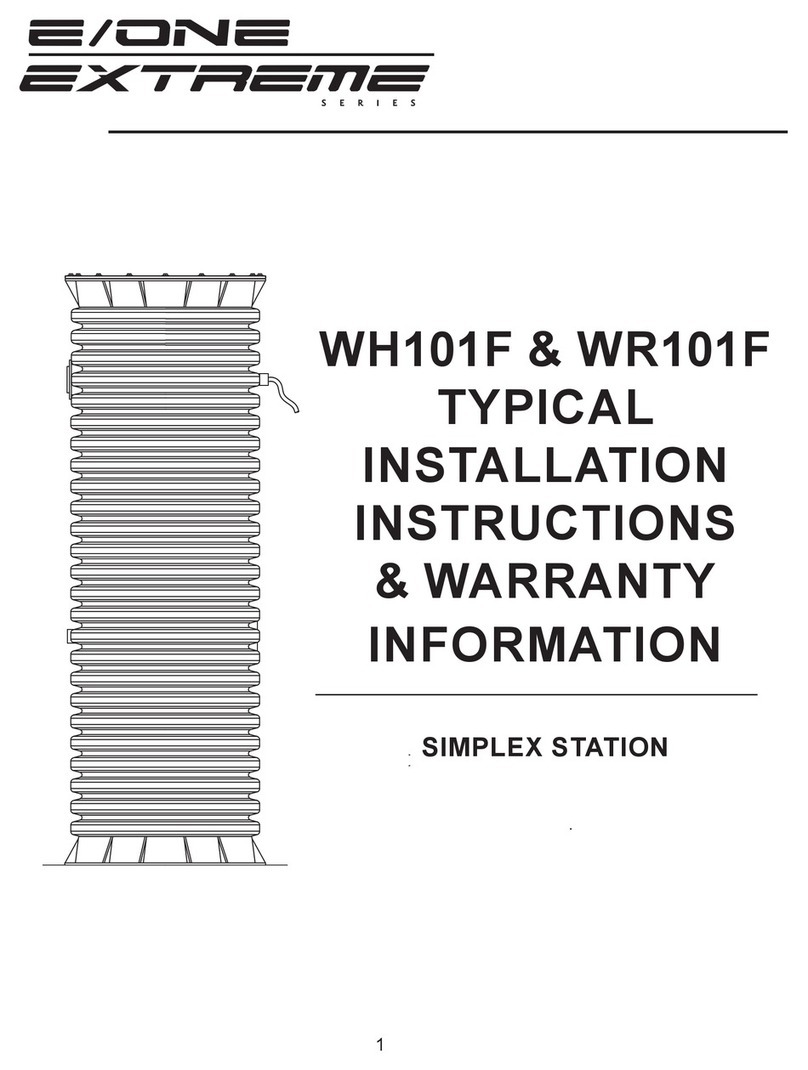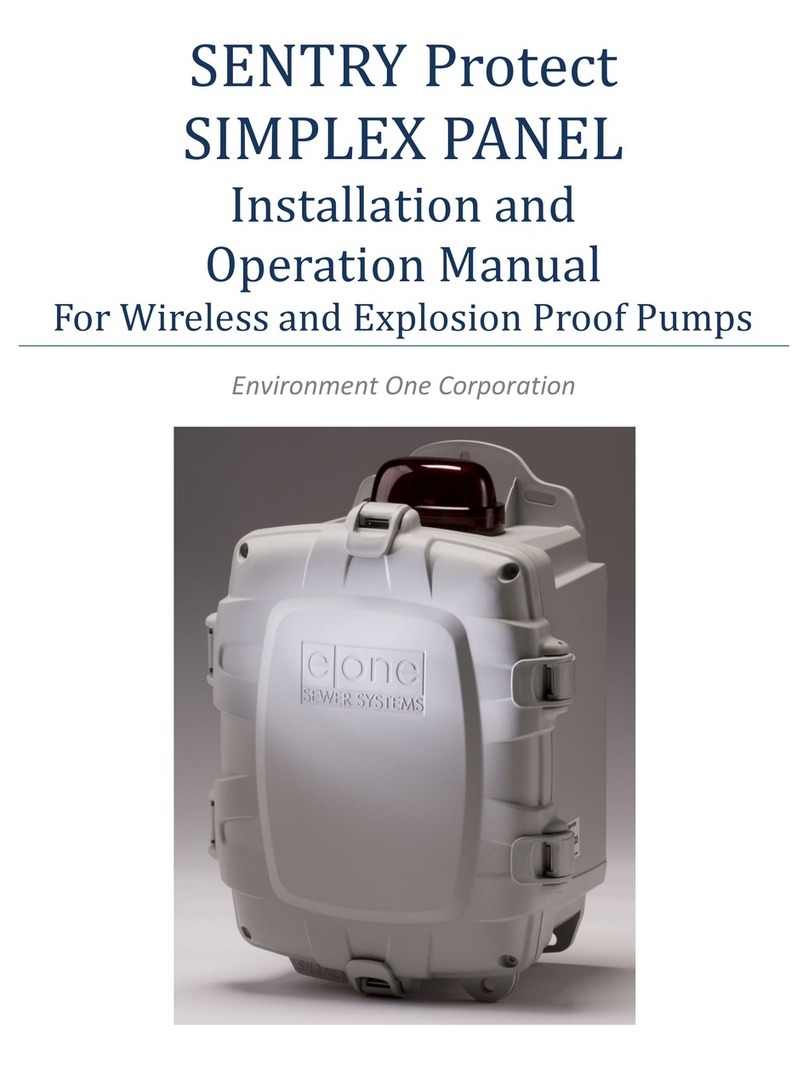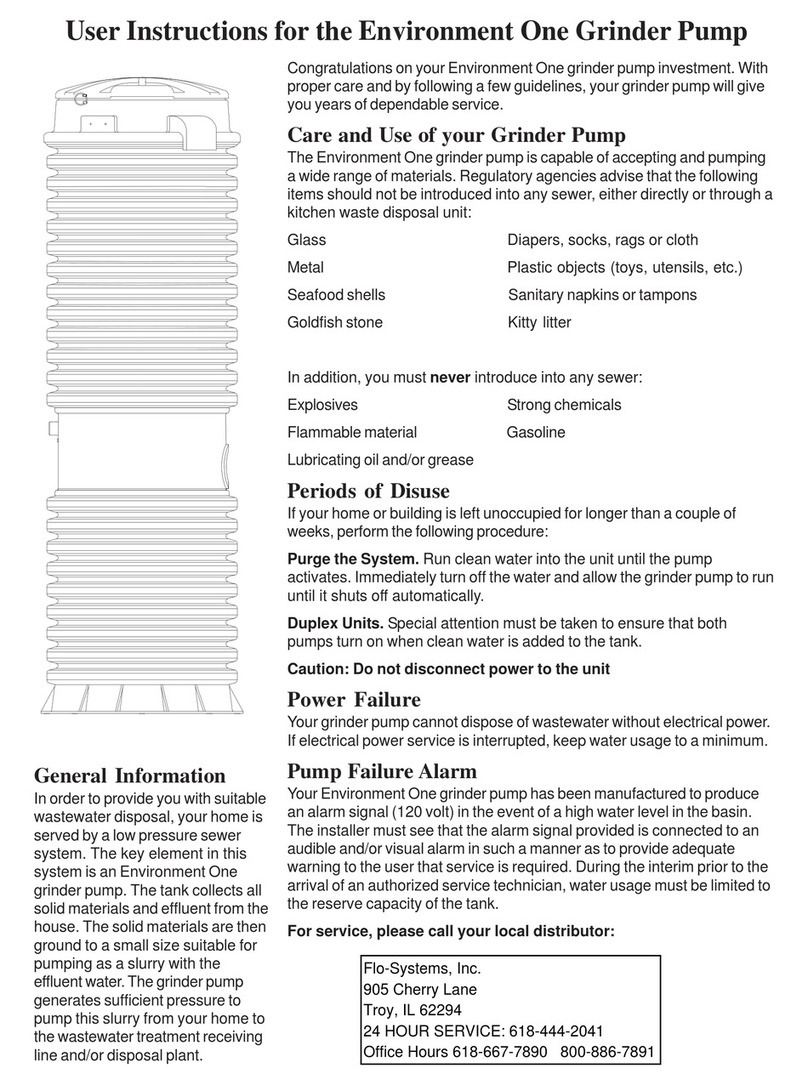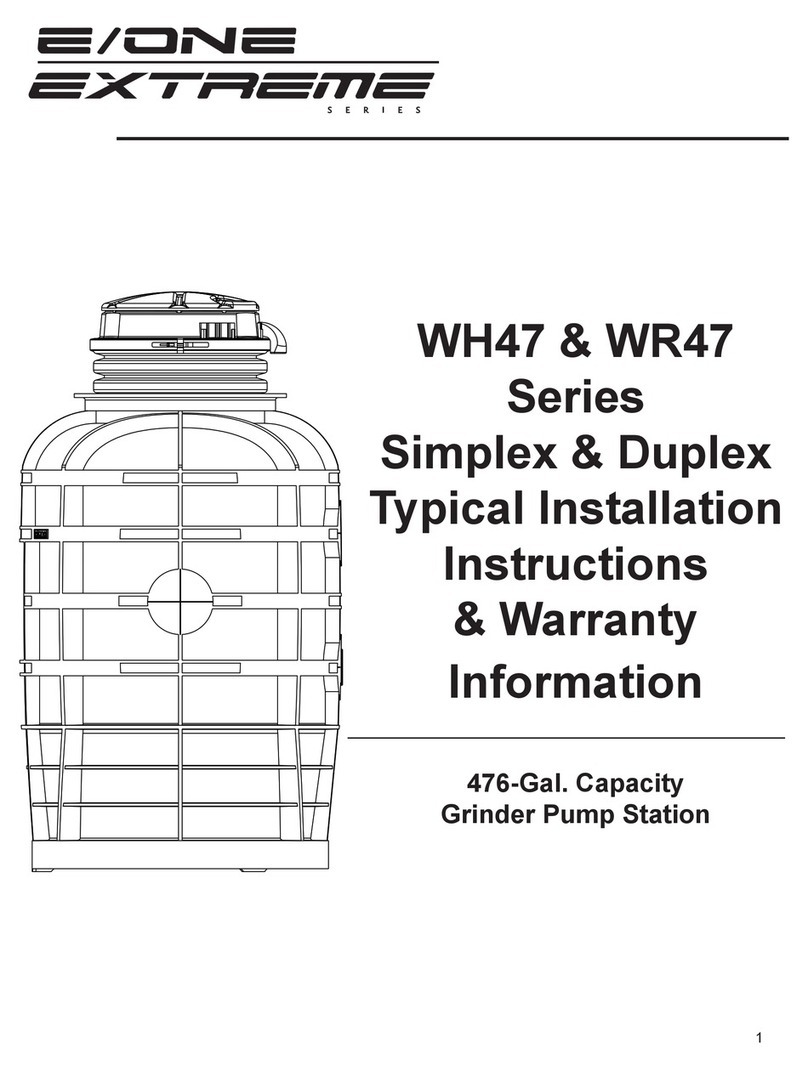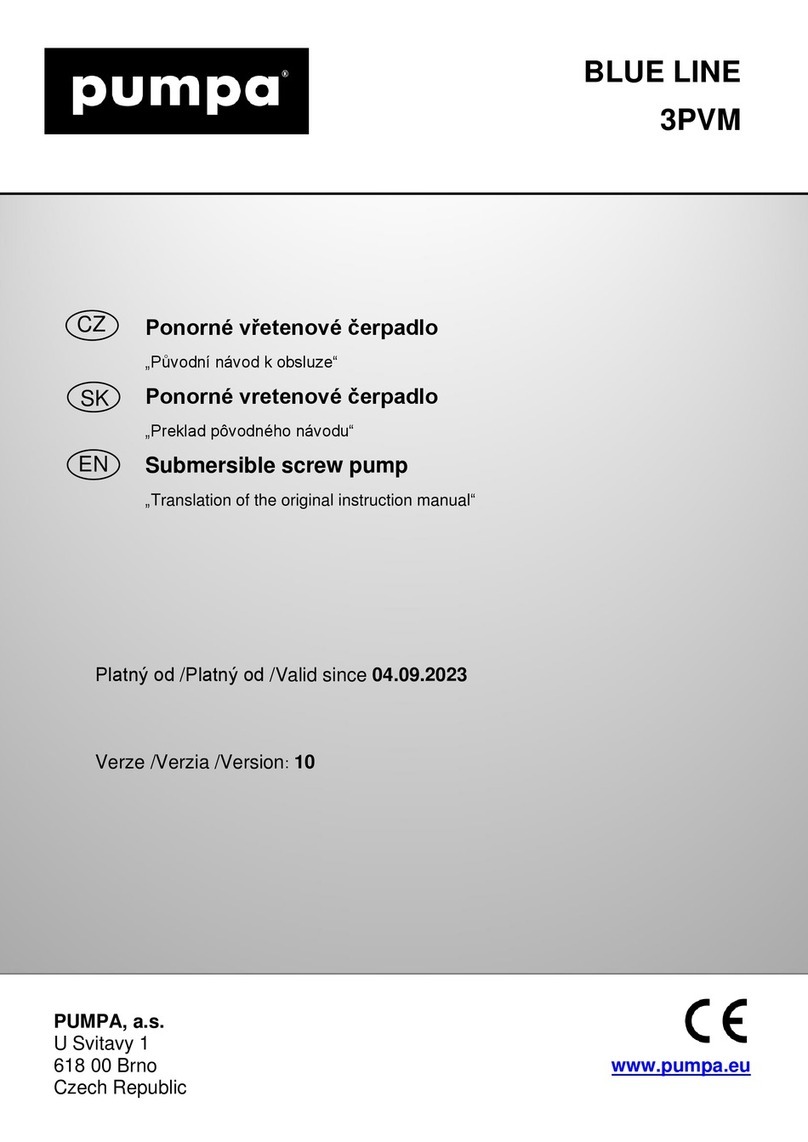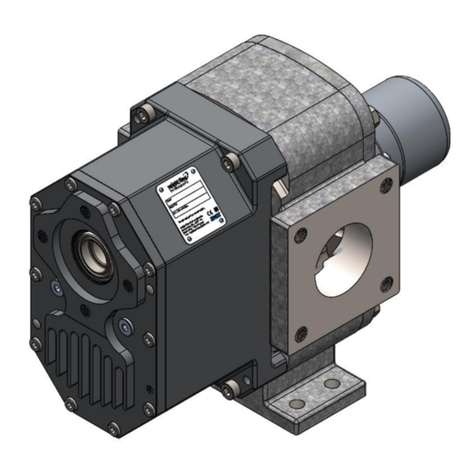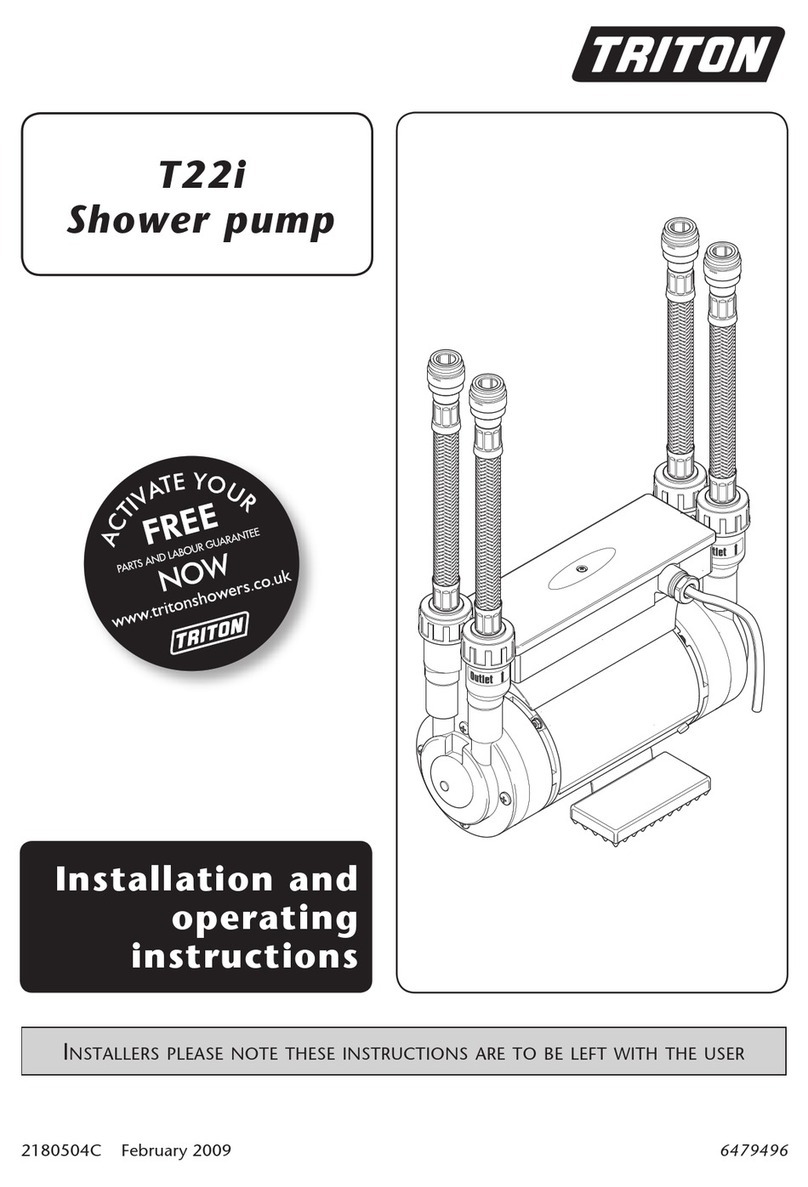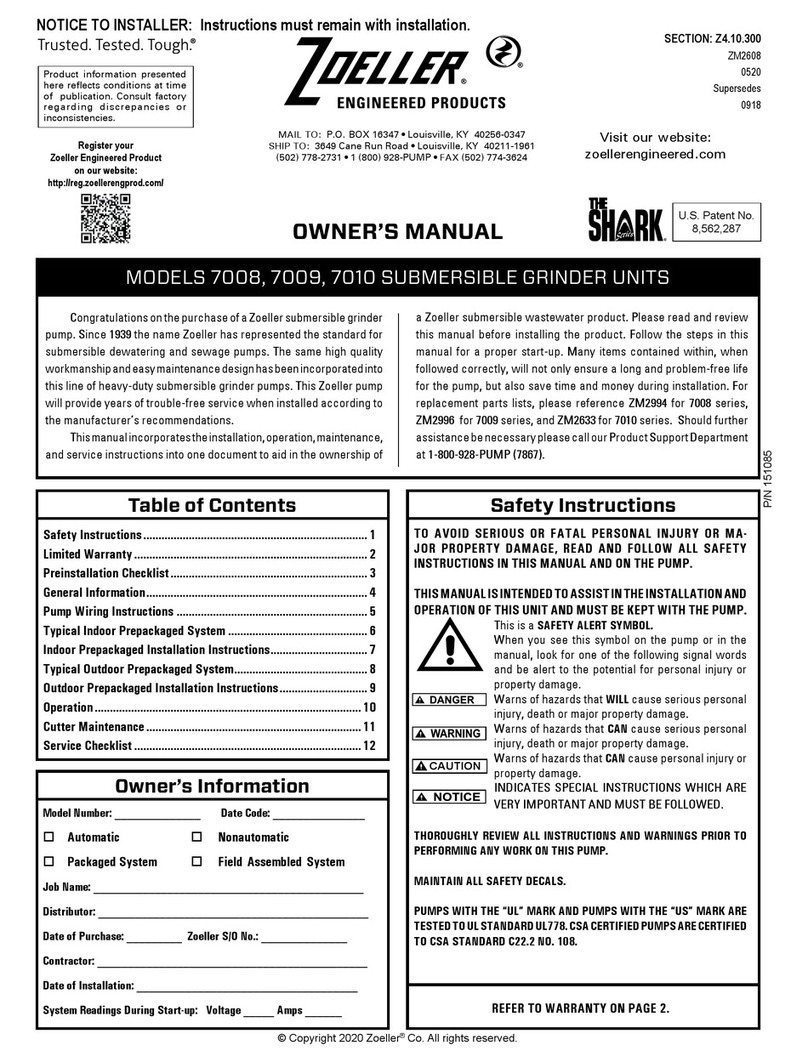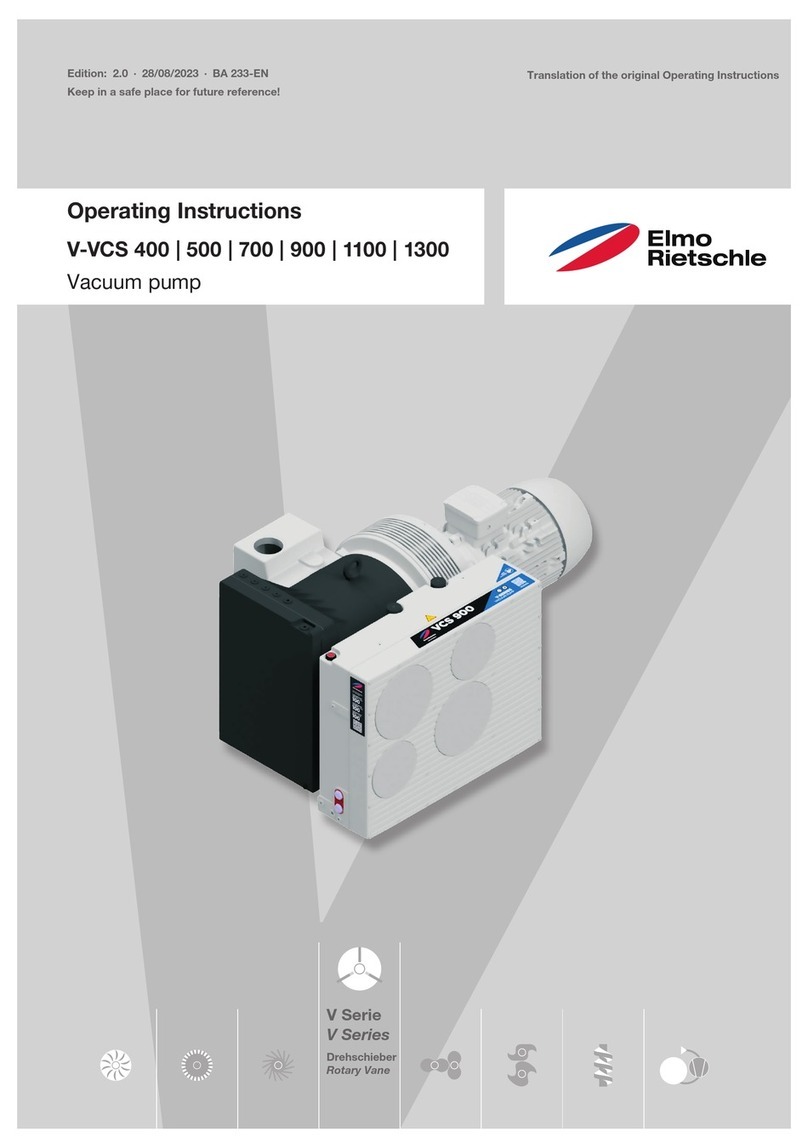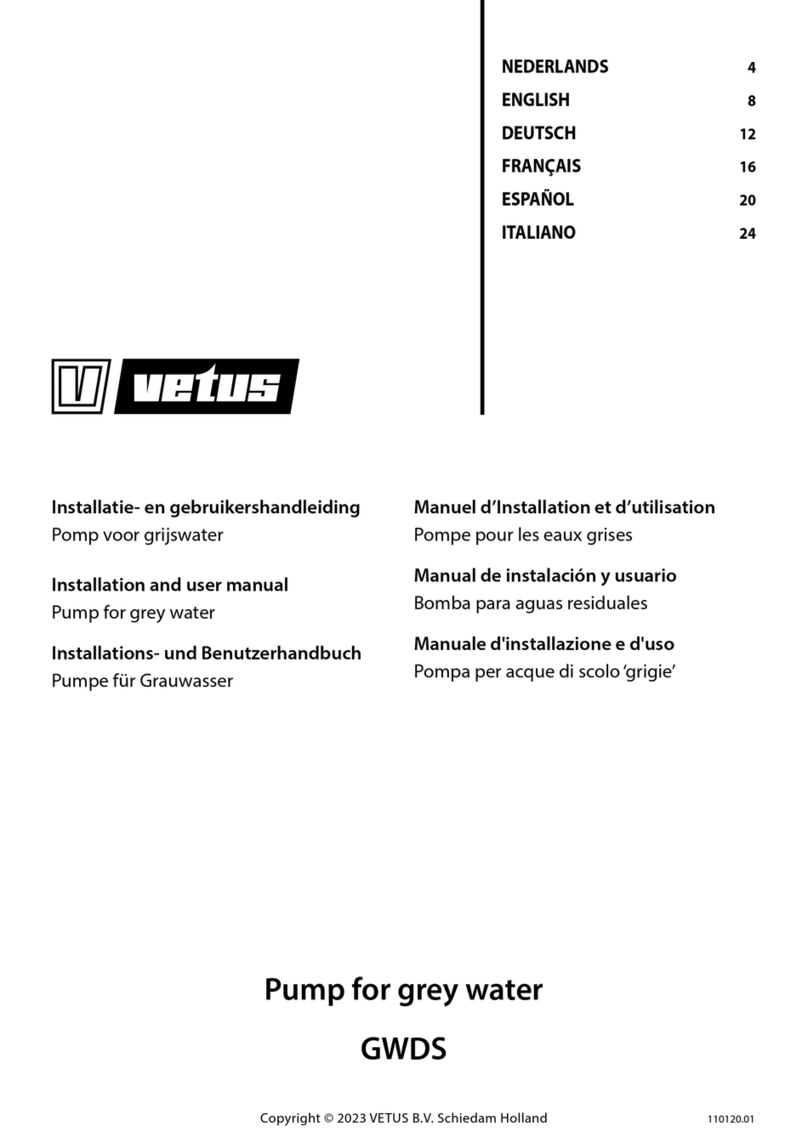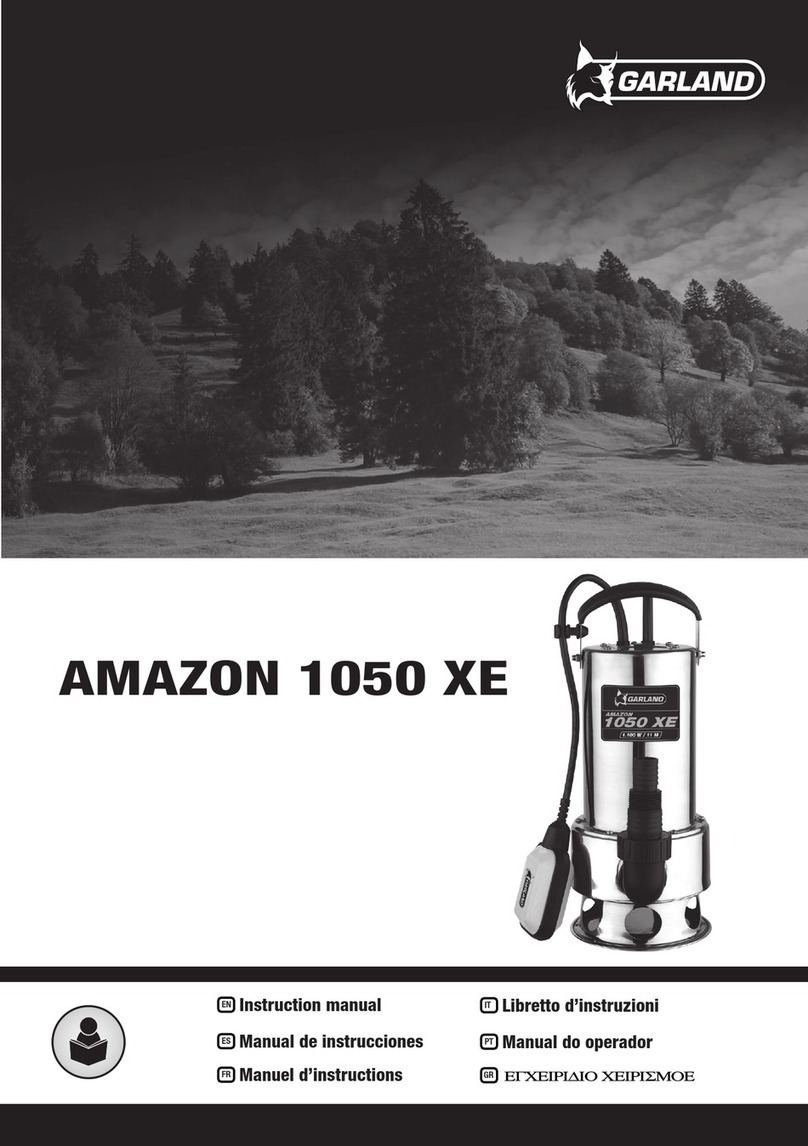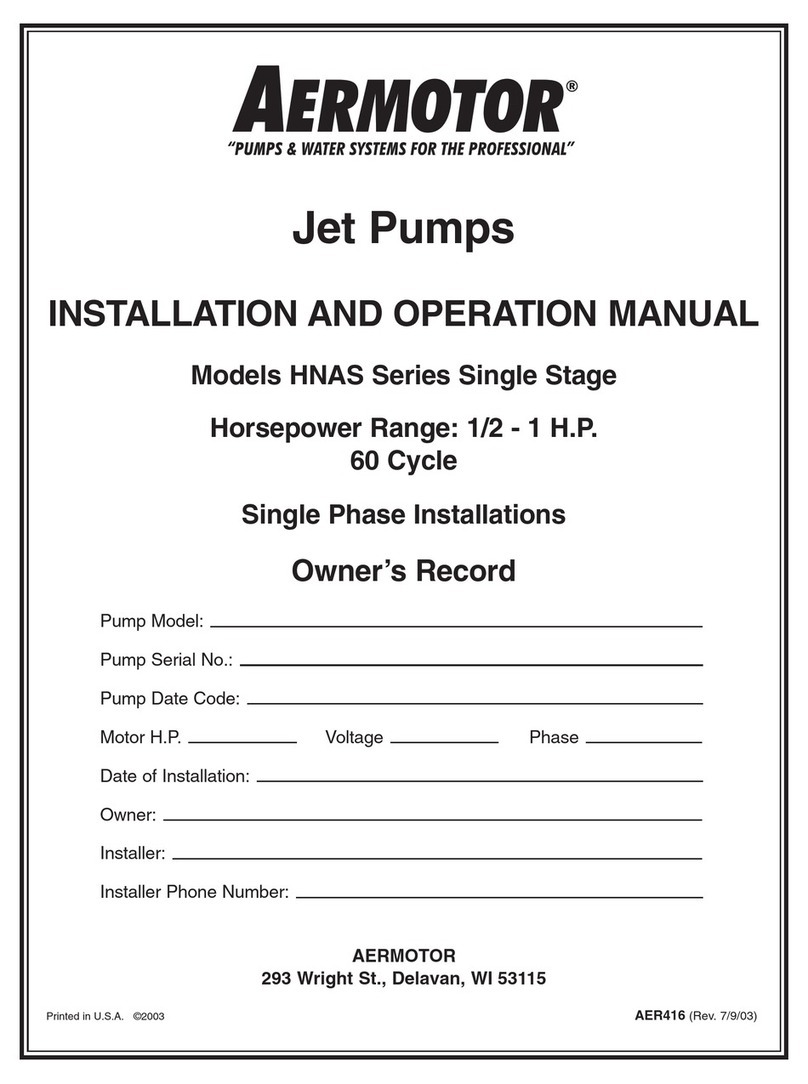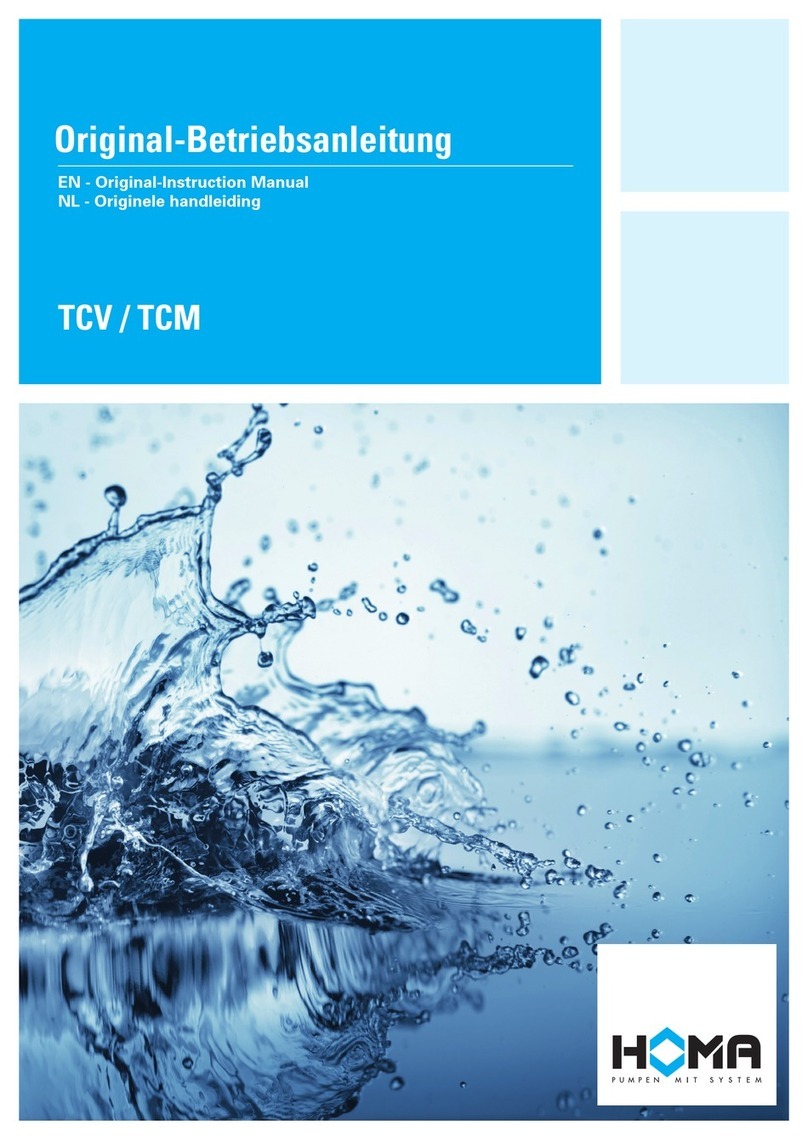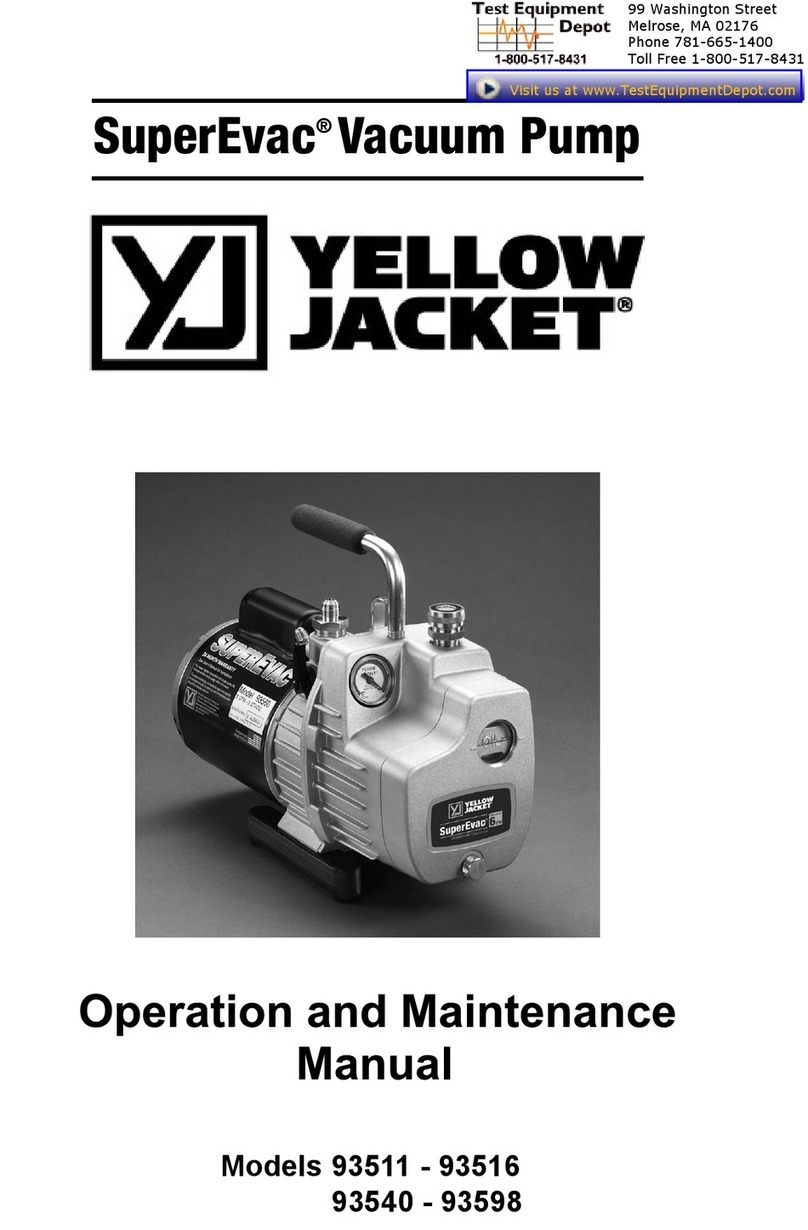
5
This is a sewage handling
pump and must be vented in
accordance with local plumbing
codes. Do not install the unit in
locations classied as hazard-
ous in accordance with the
National Electric Code, ANSI/
NFPA 70. All piping and electri-
cal systems must be in compli-
ance with applicable local and
state codes.
1. Remove Packing Material
Give the User Instructions to
the homeowner. Hardware sup-
plied with the unit, if required,
will be used during installation.
2. Tank Installation (HDPE
tank) The tank is supplied with
a standard 4-inch PVC DWV
(4.5 inches inside dia.) inlet for
connecting the incoming sewer
drain. Other inlet types and
sizes are optional (caution 4”
DR-35 pipe is of smaller diam-
eter and won’t create a water
tight joint with the standard
grommet). Conrm that you
have the correct inlet before
continuing with installation. If a
concrete ballast is attached to
the tank, lift only by the lifting
eyes embedded in concrete.
Do not drop, roll or lay the
tank on its side. Doing so may
damage the unit and void the
warranty.
Excavate a hole to a depth so
the removable cover extends
2 inches above the nished
grade line; the grade should
slope away from the unit. The
diameter of the hole must be
large enough to allow a con-
crete anchor. Place the unit on
a 6-inch bed of gravel, naturally
rounded aggregate, clean and
free-owing, with particle size
not less than 1/8 inch or more
than ¾ inch in diameter. The
concrete anchor is required to
keep the unit from oating as
a result of high groundwater
levels. The amount of concrete
required varies for each unit
(see station detail sheet for the
correct ballast weight).
The unit should be leveled
and lled with water to the
bottom of the inlet; doing so
prevents the unit from shift-
ing when pouring the cement.
The cement must be manually
vibrated to eliminate any voids.
If pouring the cement to a level
higher than the inlet piping is
necessary, place an 8-inch
sleeve over the inlet prior to
pouring the cement.
3. Tank Installation (Fiber-
glass tank) Improper handling
of the berglass tank may
result in damage and, ultimate-
ly, failure of the station. Care
should be taken during lifting
and placement to prevent im-
pacting or otherwise damaging
the tank. A non-marring sling
should be used when lifting the
tank by the berglass surfaces.
Ensure that lifting sling is rated
for the load being lifted. Lifting
chains or cables should never
be placed in direct contact with
the berglass tank surfaces.
Place the unit on a 6-inch bed
of gravel, naturally rounded ag-
gregate, clean and free-owing,
with particle size not less than
1/8 inch or more than ¾ inch in
diameter in the excavated hole.
Orient the installed discharge
tting, as required, to align it
with the existing or proposed
discharge piping path.
Determine and mark the 4”
DWV inlet pipe location on the
berglass tank wall. The inlet
pipe location corresponds with
the actual or projected point
where the 4” building sewer line
intersects the tank wall. The
center of the inlet pipe must
be a minimum of 30 inches
from bottom of the tank. The
slope of the inlet pipe (per na-
tional and local code require-
ments) must be accounted
for when determining the inlet
location. The supply cable path
and cord grip location should
be considered when selecting
the inlet location (see Section
11 and Figure 5).
If the site conditions require
concrete tank ballast to prevent
otation, ensure that the vol-
ume of concrete used complies
with the site Engineer’s recom-
mendation. Concrete ballast,
if required, should be cast in
place around the tank in the
excavation. Do not pour the
concrete ballast above the
marked inlet pipe location.
If the ballast must be poured
above this level, proceed with
installation of the inlet piping
(see Section 5) before pour-
ing the concrete. The inlet pipe
must be sleeved with an 8”
tube prior to pouring. The tank
should be lled with water, to a
level above the specied bal-
last height to prevent shifting
during the concrete pour.
Alternatively, precast con-
crete, around the tank bottom,
may be used for ballast (Fig.
1). Do not pour ballast above
the intended inlet location. If
this ballast method is used, lift-
ing hooks must be anchored in
the concrete to support subse-
quent handling of the tank. The
lifting hooks must be adequate
to support the combined weight
of the tank and concrete bal-
last, and should be sized and
installed in accordance with the
site engineer’s recommenda-
tion.
Place the ballasted tank in
the excavated hole using the
lifting hooks. Do not lift the
tank by any of the berglass
surfaces if precast ballast is




















